
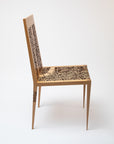
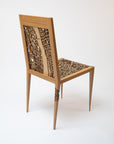
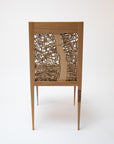
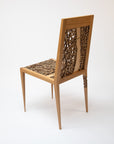

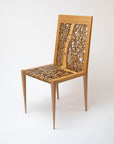
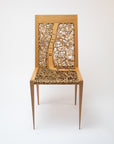
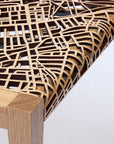
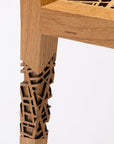
Wood Chair, London - Prototype (White Oak)
This is a one-of-a-kind early prototype. Prototypes are sold as-is and have imperfections from testing and display. They are not guaranteed to withstand regular use and are sold to be displayed as art.
This Wood Chair prototype features four maps showcasing how London has evolved over the past 675+ years. This prototype is made in White Oak.
Material: Solid Wood, Plywood
Dimensions: 20⅞in L x 17in W x 37in H
Weight: 11.4lbs
Color: White Oak
Map Scale: 1in = 500ft
Prototypes are one-of-a-kind pieces that were handcrafted during our earliest days of design development. They are truly unique, fine art objects that can be shipped to your desired location upon ordering. Your lead time will be determined upon finalizing logistics.
Made From Four Layers of Historical Maps
OCCUPYING OVER 675 YEARS OF LONDON HISTORY
Top Layer
2024
London is a global center for finance, culture, and innovation, adapting to modern challenges. The city’s economy thrives despite post-Brexit shifts, with technology and creative industries driving growth. Major infrastructure projects, including Crossrail, improve transportation and connectivity.
London’s cultural scene flourishes, hosting world-renowned events in music, art, and literature. Sustainability initiatives focus on green spaces, public transit, and reducing carbon emissions. Housing shortages and cost-of-living concerns persist, shaping policy debates.
The city’s historic legacy and modern ambitions continue defining its evolving identity.
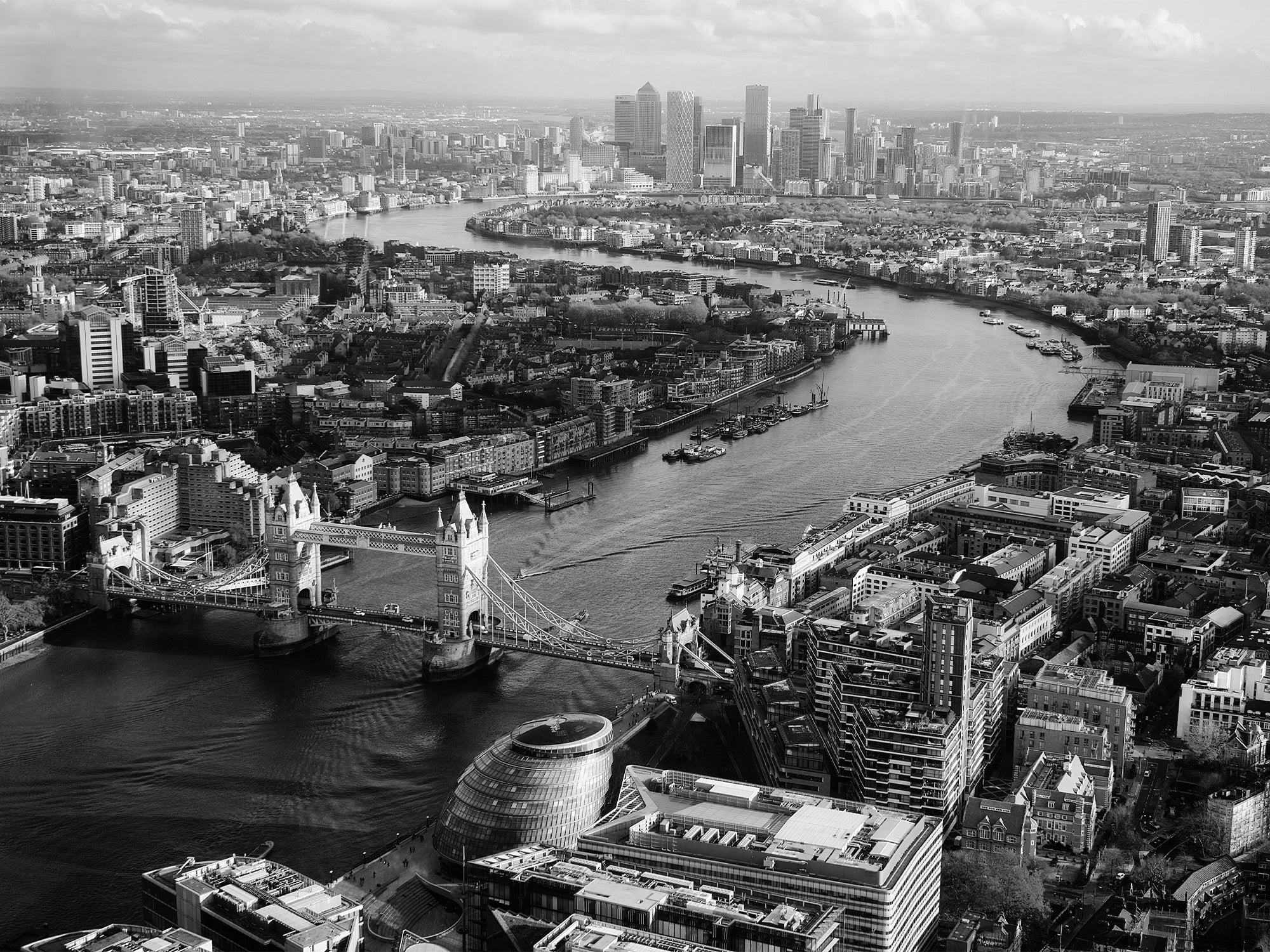
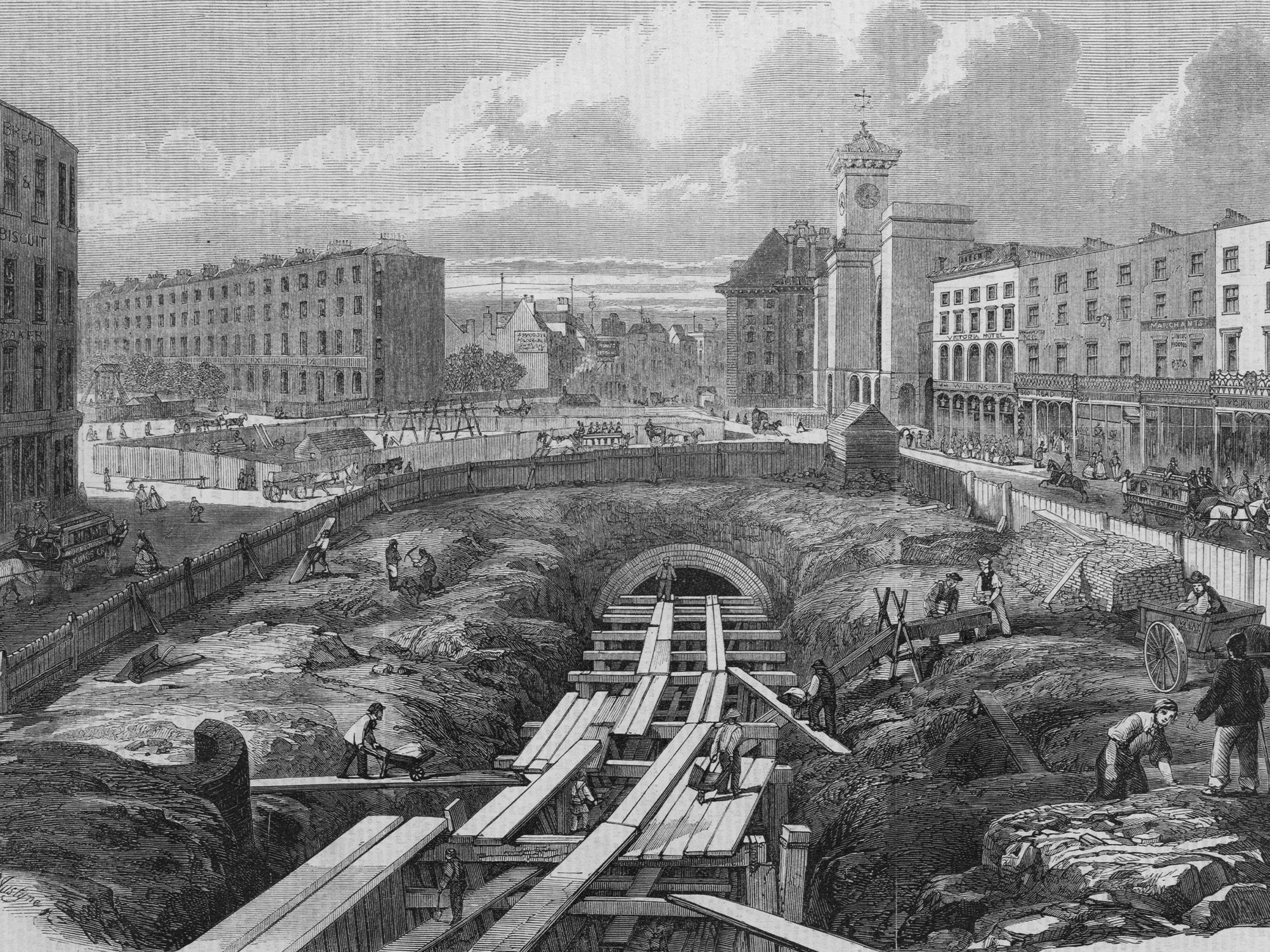
Second Layer
1863
London revolutionizes urban transport with the opening of the world’s first underground railway. The London Underground, also known as The Metropolitan Railway or The Tube, connects Paddington to Farringdon Street.
Steam-powered trains transport thousands daily, easing congestion in the rapidly growing city. The success of the Underground paves the way for future transit expansions. Industrialization fuels urbanization, bringing both prosperity and overcrowding. The Underground becomes essential to London’s infrastructure, reshaping mobility and city planning.
Victorian London continues expanding, blending technological innovation with deep-rooted traditions.
Third Layer
1666
London faces disaster as the Great Fire engulfs the city, destroying thousands of buildings. Starting on Pudding Lane, the fire spreads rapidly through tightly packed wooden structures. By its end, much of medieval London is in ruins, leaving tens of thousands homeless.
Reconstruction efforts introduce new building regulations, favoring brick and stone over timber. Economic recovery follows, with trade and commerce quickly rebounding. The rebuilding process modernizes parts of the city, reshaping its infrastructure.
Despite the devastation, London regains its role as a leading global trade hub.
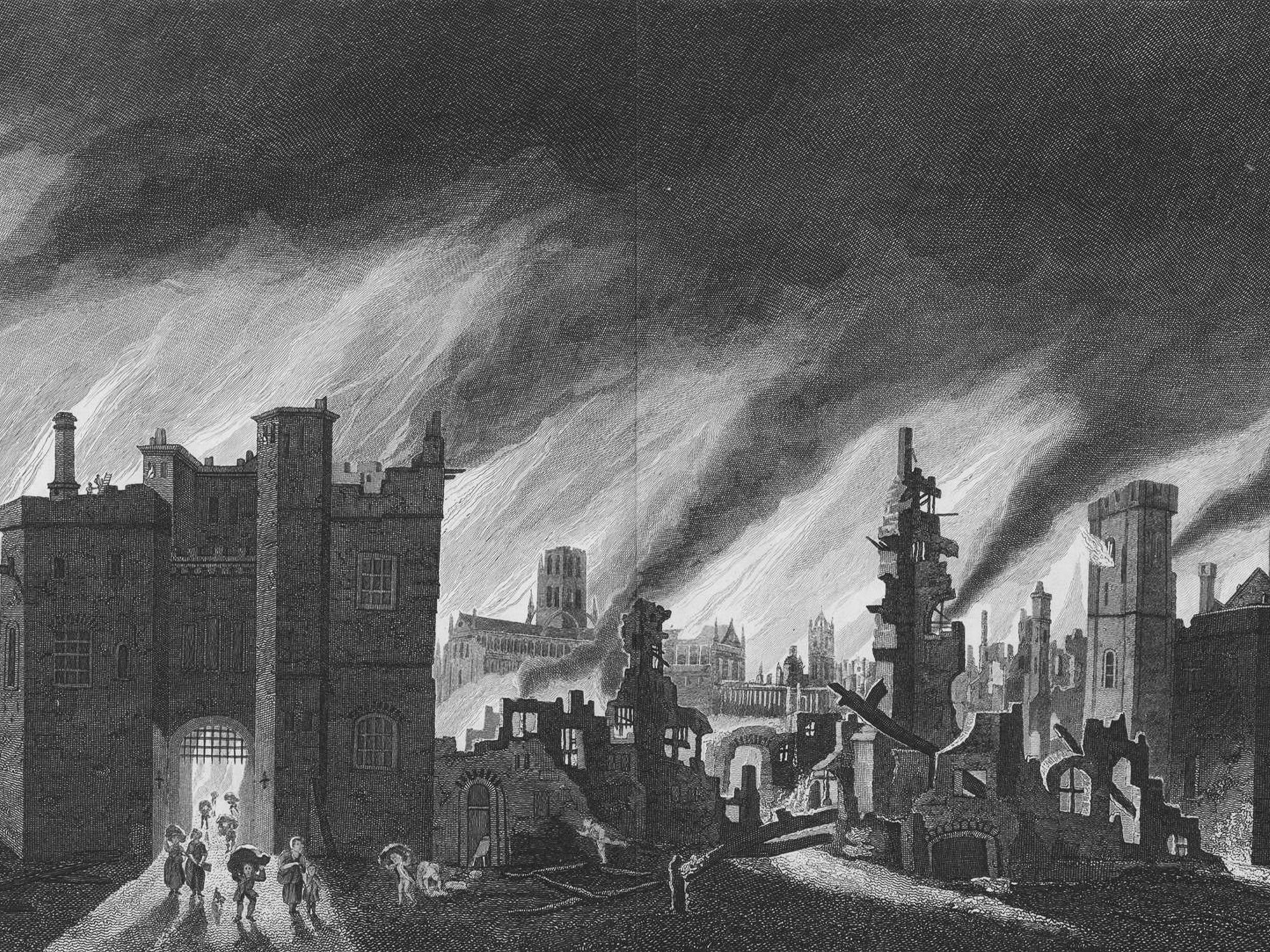
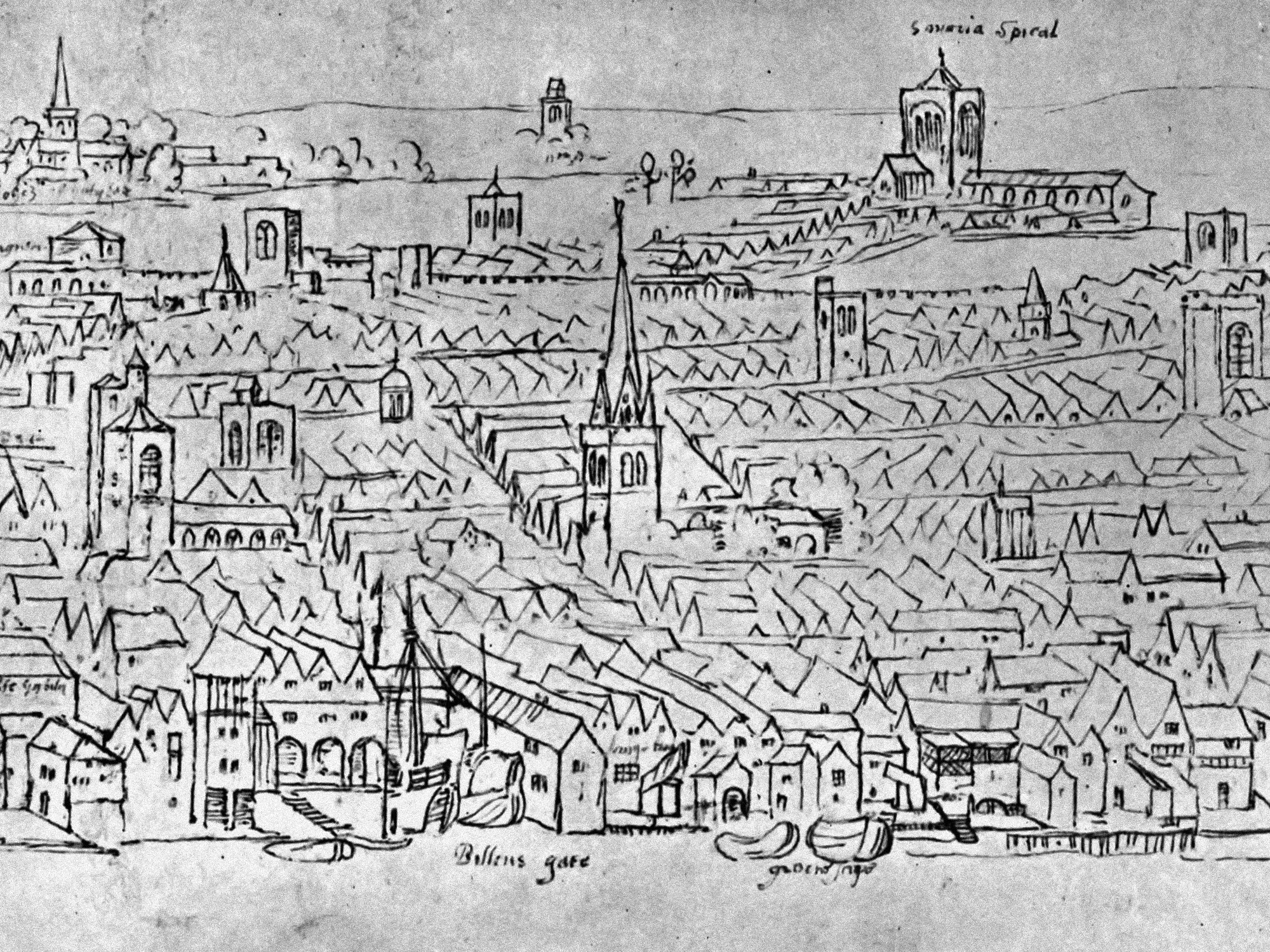
Bottom Layer
1348
London’s population reaches around 50,000, making it a key medieval trade and political center. The arrival of the Black Death devastates the city, killing up to half of its inhabitants.
Economic activity slows as labor shortages disrupt trade, agriculture, and daily life. The sudden loss of workers increases wages, gradually shifting power toward the lower classes. Religious institutions struggle to explain the crisis, leading to spiritual reflection and social unrest. Entire neighborhoods are abandoned, and mass graves become a grim feature of the city.
The plague reshapes London’s economy and society, setting long-term changes into motion.
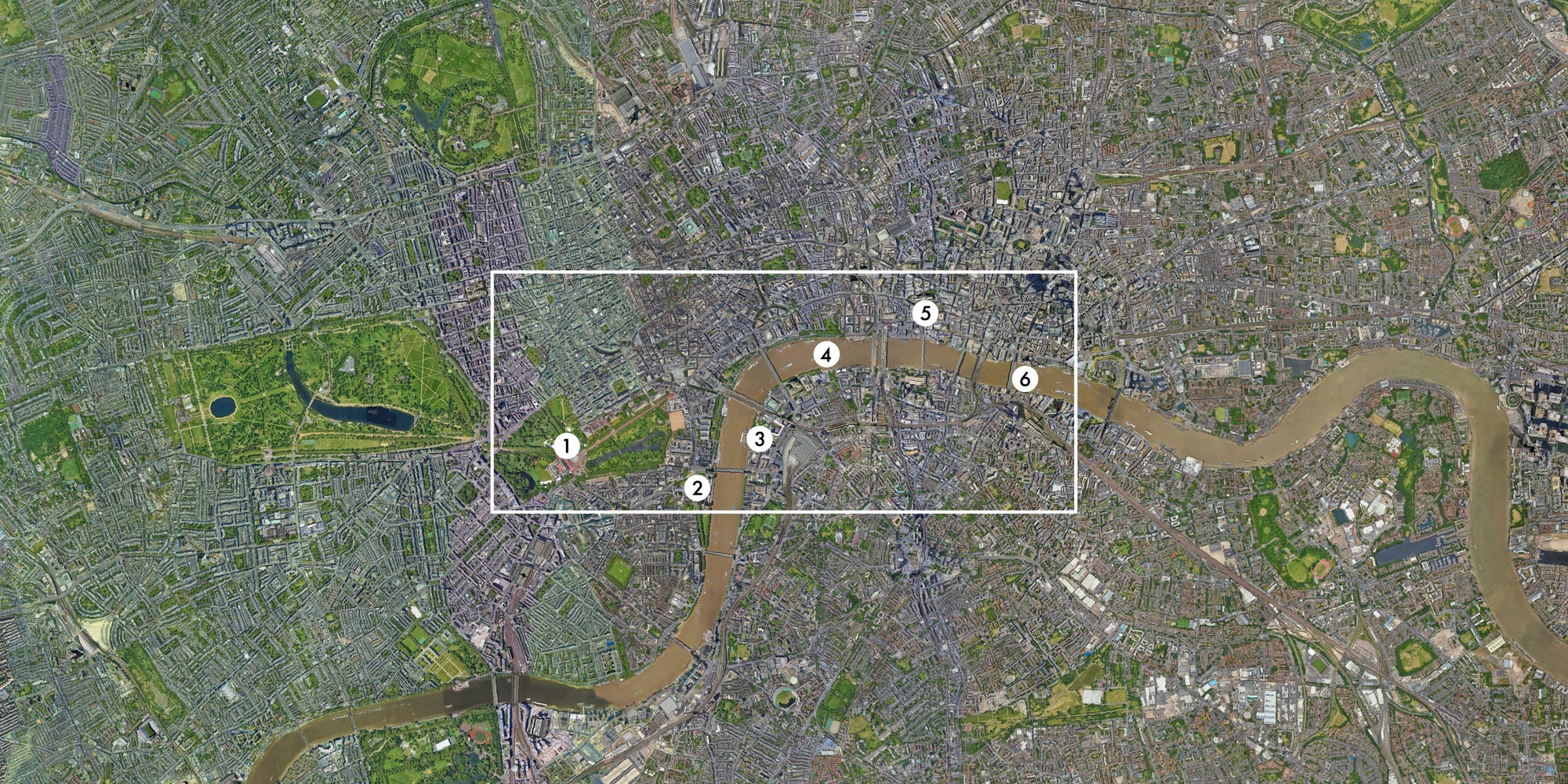
MAP LOCATION
1. Buckingham Palace
2. Big Ben + Houses of Parliament
3. London Eye
4. River Thames
5. St. Paul's Cathedral
6. London Bridge













